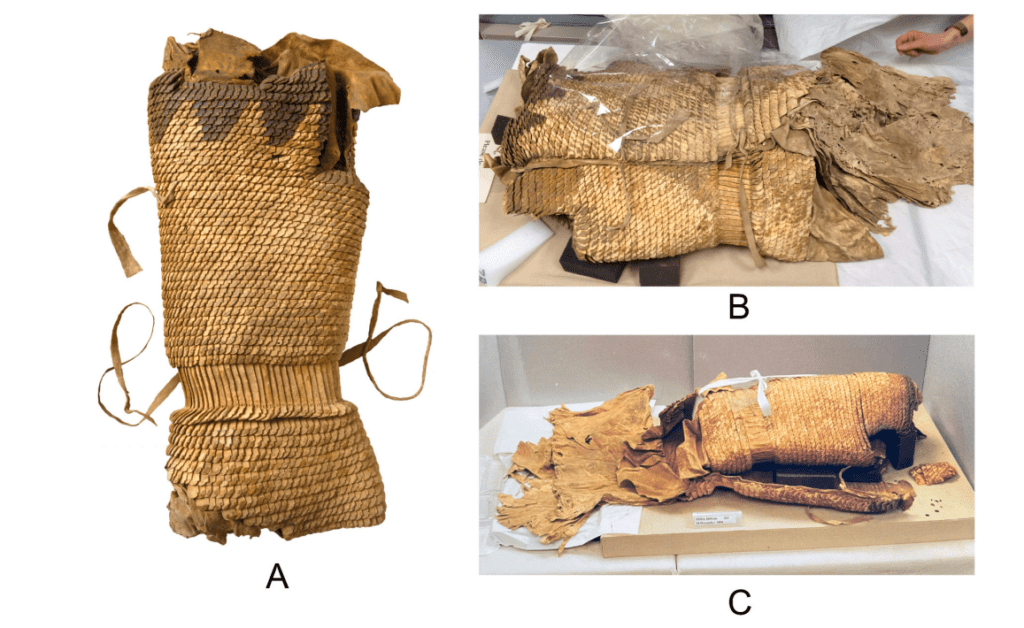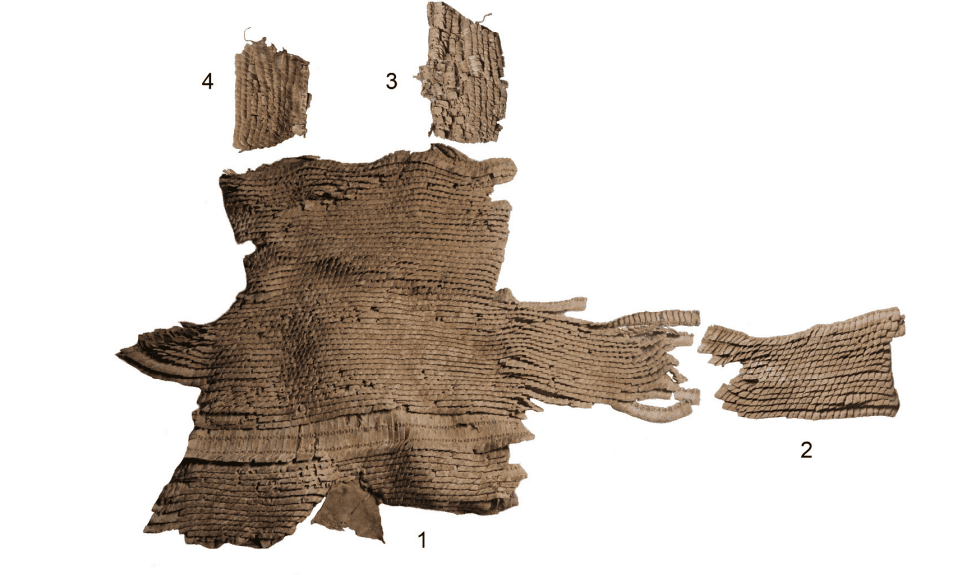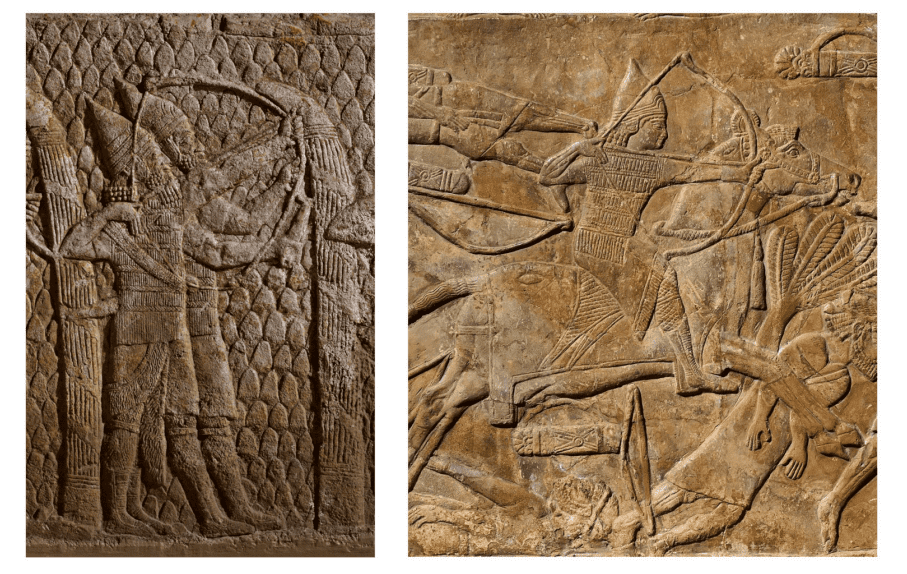
Inside a 2,500-year-old grave in northwestern China, archaeologists were stunned to find intricate armor made of more than 5,000 overlapping leather scales. The warrior buried with the armor likely fitted the garment as you would an apron, without any assistance from a second person, making it highly battle-ready. This kind of armor design is unique for its time and place, and was likely imported from the Middle East where it is thought to originate.
The unisex armor, unearthed at an archaeological site near the city of Turfan, right at the edge of the Taklamakan Desert, would have provided ample protection against blows, stabs, and arrows. Besides the military artifact, archaeologists found the remains of a man around age 30 when he died, presumed to be the warrior that used to equip the armor, alongside pottery fragments, two horse cheek pieces made from horn and wood, and a sheep skull.
Scale armor offers better protection from blunt attacks than mail and is cheaper to produce, but it is not as flexible and does not offer the same amount of coverage.

Scale armors were worn by warriors of many different cultures and often adorned their horses as well. The material used for the scales could vary wildly, from bronze and iron to pangolin scales and paper. Some examples include the lorica squamata, a type of scale armor used by the ancient Roman military during the Roman Republic and at later periods, or the gyorin kozane used by the samurai in Japan.
But armor as old as what was found at the Yangai cemetery in Turfan is exceedingly rare, as few such sleeveless garments from antiquity have withstood the test of time. According to Live Science, only a 14th-century B.C. leather scale armor found at King Tutankhamun’s ancient Egyptian tomb and a Scythian armor dating from the 8th to 3rd century B.C. come close.
After reconstructing the newly described armor from China, archaeologists led by Patrick Wertmann, a researcher at the Institute of Asian and Oriental Studies of the University of Zurich, counted 5,444 small leather scales and 140 larger ones. All were made of cow rawhide and were arranged in horizontal, overlapping rows that were connected by leather laces.

Assyrian cavalry archer in scale armor depicted in a relief from the palace of Assurbanipal (reigned 669-631 BCE) in Nineveh. Photos: The Trustees of the
British Museum.
Around 500 other burials were excavated from the ancient cemetery where the leather armor was found, with archaeological evidence suggesting it was in use for nearly 1,400 continuous years until the second century A.D. We know very little about the people who were buried there and used to live in the Tarim Basin more than 2,500 years ago. Archaeologists have named them the Cheshi people. They practiced agriculture, lived in tents, and likely kept cattle and sheep. Like other nearby cultures, they must have also been horse riders and archers.
The man from the burial site, however, may not have been Cheshi. There is no other scale armor from this period or earlier in China. This style, however, is quite common among the Persians and Scythians of the time. Even some Greeks wore them, although they preferred other styles of armor.
Although rife with speculation, the researchers believe the armor was most likely not made in China. From what they could gather, the archaeologists think instead that it was fashioned by Neo-Assyrian craftsmen, whose work can be found depicted in 7th century B.C. stone carvings. If this is true, then the Yanghai armor would constitute one of the earliest pieces of evidence of West-East technological transfers of the first millennium B.C.
As for the warrior whom the armor belongs to, things are even murkier. The design of the armor is proper for both mounted cavalrymen and foot soldiers. The presence of the horse cheek pieces suggests the man was of the former quality. The man could have been a Cheshi who imported the armor from the West through some means or a foreign soldier with Assyrian equipment come to fight in China.
The findings appeared in the journal Quaternary International.


